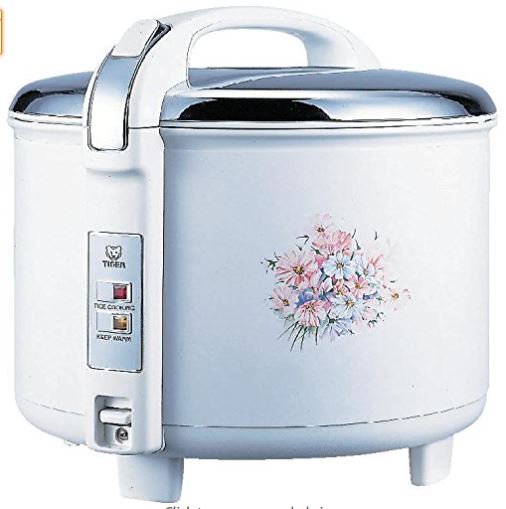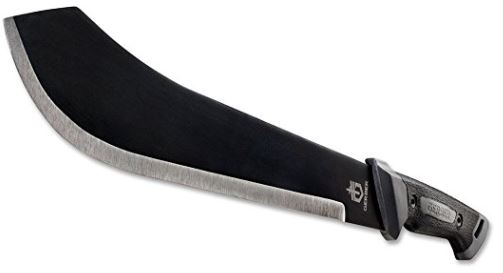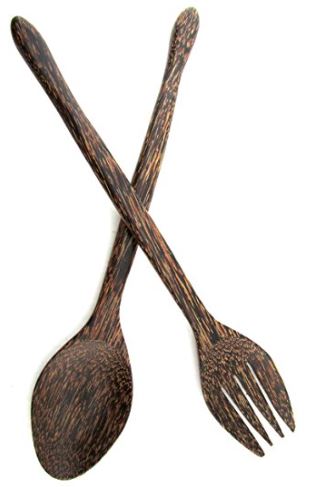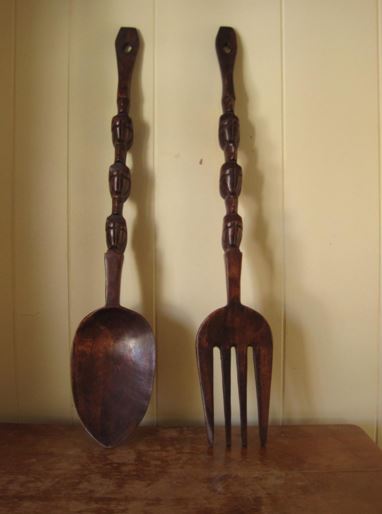

Growing up my mother was a very traditional Filipina woman that moved here from Manila, Philippines, to live with my Caucasian father. They met thanks to his service in the United States Navy. (This is a fairly common story here in the U.S.)
I later found out I was adopted, but it was for the better. My biological mother was also Filipina, and my biological father I found out through a DNA test was similarly Caucasian. The difference between my biological parents and my parents that raised me, is my biological mother was a schizophrenic, alcoholic, and unstable woman suffering from an explosive anger disorder. (Not her fault, she suffered a lot in life.) My mother who raised me did it differently compared to the other parents in my neighborhood, but she genuinely loved me and I wouldn’t have traded my life experiences with her for anything else in the universe. She taught me how to endure.
The older I got I learned that EVERYONE is bat-shit-crazy. My mother was a product of what she knew and learned, as we all are. Now what does that make me? It makes me a very confused millennial trying to balance my place in society, my true self, and the emotional desire to hold on to the memories and habits of my deceased mother like a ritual.
So in honor of my mom who is now deceased, I dedicate to you this article. I love you mom. Rest in Peace.

10. ‘tabo’ (water dipper)
In the Philippines toilet paper is a luxury. (SERIOUSLY) So growing up my mother was very mindful about saving money. She never deterred me from using toilet paper, but was very INSISTANT on the importance of cleaning my “pek pek” with a “tabo!” (You can laugh, its okay!)
Literally a tabo is nothing more than a water ladle. You wash yourself with the water ladle to clean away the stuff toilet paper doesn’t clean, or in replacement of toilet paper entirely. Once you’re done cleaning yourself, you then use a clean wash rag to dry off.
Literally, you will feel like your private parts just came out of the shower instead of sitting on a toilet.
I dare you to give it a try, unless your Filipino then it’s very likely you already have one of these.
If you plan on traveling to the Philippines you’re going to want to get used to going to the restroom like this, because the MAJORITY of bathrooms you visit while there, aren’t going to have toilet paper. Most people say, after incorporating this restroom method into their lifestyle, they prefer it over toilet paper. Less waste with a cleaner feeling. If you don’t want to do this at all, I recommend you bring baby wipes everywhere you go.
The fanciest tabo I have ever seen:
Hinoki Wood Ladle made by Bartok Design Japan Co.

(Filipino’s aren’t the ONLY Asian’s that practice this method of using the restroom.) This tabo is extremely fancy because of its Japanese minimalist design, it’s made out of natural antibacterial & antifungicidal wood, and highly recommended for its wellness and health benefits.
Very rarely does a Filipino household have a tabo that nice though. Most tabo’s, when you come across them, are plastic and very plain looking. They typically hold around 1 liter of water so that you can sufficiently clean yourself without having to repeatedly go back for more water.
Here’s a more common tabo:
Water Ladle Leaf Series Green Plastic Economical

This plastic water ladle holds 1.3 Liter and is just as efficient as the fancy wood Japanese one for a fraction of the price.
Of course its not naturally antifungicidal or antibacterial, which means if you use this kind of tabo, be sure to clean it with soap regularly. Even if the tabo doesn’t touch your private parts, your hand holding it might be transferring bacteria and germs.
These Cottonelle Fresh Care Flushable Cleansing Cloths are perfect for on the go if you don’t trust the toilet paper or tabo’s wherever you go.

09. Flip Flops
In a Filipino household, traditionally, you take your shoes off at the door to show respect towards the homeowners clean floors. Many cultures practice this around the world.
But if you’re Filipino you know that flip flops simplify EVERYTHING foot related. They let your feet breathe, they’re easy to slip on and off, you can get them in a variety of colors and in varying prices. WalMart has cheap foam $0.89 ones if you’re truly desperate. But lets look at some of the brands I see most regularly on other proud-Filipino feet. 🙂
The first set of flip-flops I’m looking at is a Filipino brand, the sandals are designed and made in the Philippines, and it’s bragged by many Filipino’s that this is the most comfortable sandal on the market.
Islander All-Weather Comfortable and Stylish Flip-Flop Sandals



The women’s versions have thinner straps and a different set of colors.
The Women’s Islander Flip Flop come in a few colors you won’t find in the men’s version. My favorite is color is red, and I LOVE their red women’s sandals.
I’ve seen women wear the men’s versions as well with no problems or qualms. It really just depends on what style you prefer.



OluKai is a Hawaiian brand of sandals that are also very popular with many Filipino’s.
They are an extremely sturdy and comfortable sandal that can withstand a variety of terrains. I’ve heard of people sandal-hiking with this brand of sandal for its sturdiness. So if you’re looking for a reliable sandal that will last you longer than a summer season, OluKai will have you covered. They also design men’s AND women’s sandals in varying price ranges.
OluKai Men’s Kohana Kai Moss/Dark Wood Sandal



Olukai Paniolo Sandal – Women’s Natural/Natural




08. Brooms! Walis TingTing and Walis Tambo
Not all brooms are created equally. 🙂 In the Philippines its common to see people cleaning their outdoor areas with what’s called a “Walis Ting Ting.”
It’s basically a stick broom, typically made out of coconut sticks. My mother always had at least three of these around our property growing up. She used them for a large variety of sweeping projects outside the house. My good friend Stephanie and I were joking about how our mothers also used them for punishment. We often got spanked in the butt with one of these stick brooms. Looking back on it, it’s funny. We never got hurt and it seems to be some sort of Filipino Tradition that her and I decided NOT to carry on. Haha! However, we use these brooms in our homes regularly for cleaning, and not for spanking!
Over time and with excessive use, the bottoms will start to fray and lose its sturdiness. Luckily, they aren’t that expensive. They’re actually cheaper and more economically friendly than a traditional broom you see in the United States.
STICK BROOM OR WALIS TING TING


Walis Tambo, AKA Whisk Broom
These brooms are typically used for only indoors. It’s perfect for tile, stone, and hard floor surfaces that you don’t want getting scratched up by the walis ting ting (the stick broom up above). Just like the stick broom, the walis tambo is fairly cheap and economical. The very bottoms will start to break off or fray over time with regular use. Don’t be alarmed, it’s perfectly normal.
This particular whisk broom features “Baguio City” on the handle. It’s the location in which the broom is made, and also a popular location to visit in the Philippines.



Here’s a fairly cheaper one from Vietnam. (Again, the Philippines isn’t the only place these brooms are made and used.)


07. A Floral Rice Cooker
There’s millions of different kinds of rice cookers out on the market, but every time I visit a Filipino home, the rice cooker ALWAYS has flowers imprinted on the outside of it. I’m not really sure why, my moms explanation was, “maganda!” Which means beautiful. Filipino’s love their flowers, as did my mom, and myself.
This first floral rice cooker would have been my moms kitchen-wish come true. It holds up to 15 cups of UNCOOKED rice. That is A LOT OF RICE.
My mom would have been ecstatic though. This particular rice cooker cooks and keeps the rice warm for up to 12 hours without drying it or burning it. For anyone who has cooked rice on the stove top, you understand how difficult it can be to avoid burning or over cooking. This handy rice cooker does it all for you and you don’t have to keep an eye on it. It has a detachable moisture collector, retractable power cord to clean up counter clutter, and has indicator lights to show what stage your rice is in at that moment. You’ll also have enough left over rice to create enough fried rice to feed your whole family the next day.

This next rice cooker (Aroma Housewares ARC-914SBD Digital Cool-Touch Rice Cooker and Food Steamer, 8-Cup (Cooked), Silver) by Aroma House is the one I personally own.
There’s no flowers on it, but it does everything the previous one does, except with only 4 cups of uncooked rice. This is the perfect size if there’s only two people in the home. My boyfriend and I cook the 4 cups of rice, and turn the left overs into fried rice the next day. That’s also after eating steamed rice with our breakfast, lunch, and dinner. It also comes with a steam tray to steam cook single portions of vegetables or meat while your rice is cooking, and a sturdy rice paddle.

06. Ya Gotta Have A Machete Or A Bolo Knife
I know that sounds crazy to most people, but I know the way my mom raised me, having a sturdy machete available is never a bad idea (as long as you know how to hold it and use it.)
If you watch those reality tv shows where they go out into the woods and venture, live, and hunt… (ex: Alone, Naked & Afraid… etc…) more often than not, there’s a machete there to help make their situation more tolerable.
While most people don’t live in rural areas where a machete might prove useful, others enjoy having them in their home on display, or slid between the mattress and box spring incase someone tried to murder you in your sleep (which my mother was always prepared for). If you’re going to keep a machete for self-defense though, you might want to learn how to properly handle it first. It’s not like chopping onions in the kitchen. (My mother was a natural fighter that did splendorous things around our home with a machete. It had to be her favorite tool.)
Pinuti III Philippine Visayan Sword –
This is probably the fanciest machete I’ve ever seen. It’s less like a normal machete and closer to a fancy sword. But none the less, it’s a beautiful example of what a Visayan Sword would look like from the PI. I could see setting this up in my home for display. I don’t think it’s something I’d want to use around the house. Although, I’m sure it could be useful in an emergency situation if you desperately needed a sword for some reason. The handle is beautiful too. It’s very simple yet sturdy and still presentable.

U.S. WWI Model 1909 Bolo Knife with Scabbard –
The M-1909 Bolo Knife was designed to aid US soldiers with jungle foliage that they found themselves in with incursions into Cuba and the Philippines.
It was designed to be carried as a belt knife from its first production at the Springfield Armory in 1909.
This fine reproduction is constructed of tempered high carbon steel blade with proper markings of the era. Arrives razor sharp!
19 inches in length, weighs 2 lbs.
This is a really cool Bolo Knife with an interesting history behind it. Plus you won’t have to worry about sharpening it when it arrives!


Gerber Gator Bolo Machete
I’m a huge Gerber fan. (Not the baby food company, lol) My pocket knife that I carry with me everywhere is a Gerber. Specifically it’s the Gerber EVO Jr Serrated Fiskers. It fits perfectly in my pocket, easy to flip open when I need to, and always proves itself useful.
It’s the strongest most well-made pocket knife I’ve ever owned.
I know their full size machete’s have the same reputation and will last you your lifetime. If you EVER have a problem, all you have to do is call Gerber; their items come with lifetime warranties. I don’t know anyone that’s had to use the lifetime warranty since their products are so well made, but it’s nice to know Gerber offers it.



05. Your Kitchen Must Be Stocked With Soy Sauce & Vinegar!
If you didn’t know, you HAVE to have both soy sauce AND vinegar to make at least the most basic recipe’s of chicken adobo; one of the MOST popular dishes of the Philippines.
I know in America if you go to a normal grocery store, you’re probably going to be running into store brand soy sauce and vinegar, or something along the lines of Kikkoman.
As a Filipina, I have cooked with a large variety of soy sauce and vinegar brands, and I have to say that my FAVORITE is Datu Puti. It’s a product directly from and of the Philippines, and it has the best flavor for achieving the best chicken adobo possible.
If you can’t find Datu Puti brand of soy sauce and vinegar near you, Amazon can ship it for the same price you’d pay in a store. Even if you don’t cook chicken adobo, or Filipino dishes, try this brand for what you usually use soy sauce and vinegar for. You will notice a more enhanced and palatable flavor. I highly doubt you’ll ever go back to use Kikkoman after trying Datu Puti.
Datu Puti Vinegar and Soy Sauce Value Pack – 1 liter bottle of each
Cane Vinegar and Soy Sauce Value Pack
1 liter bottle of Cane Vinegar (33.8 fl oz)
1 liter bottle of Soy Sauce (33.8 fl oz)
Product of the Philippines
This set of vinegar and soy sauce will last me quite a while. You’re definitely getting your moneys worth with this brand.


04. Coconut Scraper!! (Fresh Coconut Is Always The Best!)
My mom had a wooden stool with a stainless steel coconut scraper securely screwed to one end. She’d place a bowl under the coconut scraper, grab the coconut, bring it out in front of her, and slam it down on the stainless steel’s serrated edges to crack it open.
My mom was a very resourceful bad ass, however I don’t suggest doing what she did. There are other safer methods for cracking open a coconut. But being able to sit on the stool and scrape the coconut right into the bowl was a very convenient way to get the meat out of the coconut.
Handy Portable Fresh-Coconut Shredder With A Stainless Steel Knife – Serrated Edges
This pretty much looks exactly like the one my mom had. The blade was the same shape which made scraping coconut super easy.



Coconut Shredder & Scraper
If you’re not interested in having something so bulky, our home also had a small hand held coconut scraper. They’re cheaper and can be used on other fruits and vegetables. For example, you can use one end to turn zucchini into spaghetti noodles.


03. Jufran Banana Ketchup!
There are two kinds that I know of; Hot or Regular. I personally like the regular, and if I want it hot, I mix Sriracha in the sauce. No matter what though, they are both fantastic!
Every Filipino household KNOWS they have to keep this in stock for lumpia, marinades, grilling, and so on. For those of you who’ve never had it, it’s similar to sweet and sour sauce that you see in Chinese buffet’s. The difference is, there is no sour, it’s thicker in consistency, and has a deeper red color. IT’S DELICIOUS! I personally don’t taste banana when I eat it either. I don’t really know how to describe it. I also add it when I’m cooking my fried rice. It gives the rice a light red/pink color and adds a different dimension to the flavor of fried rice.
Jufran Banana Sauce (Hot) – 12 Oz [Pack of 1]

Jufran Banana Sauce (Regular) – 12 Oz [Pack of 1]


02. The Decorative Wooden Fork & Spoon
We had a set in our home growing up. It’s a Filipino tradition. Unfortunately, when my mom passed away I didn’t inherit them. I’m not sure what happened to the set she had. Her set had a woman and a man carved into each utensil. My memory is foggy, but they were probably 12 inches long and maybe 2 inches wide.
Wooden Utensils Spoon and Fork Set – Natural Palm Wood Servers

More Traditional Looking Filipino Wooden Fork and Spoon


01. LUMPIA WRAPPERS!
If you have NOTHING ELSE on this list, you HAVE to at least have Filipino lumpia wrappers stored in your freezer. A Filipina/Filipino/Pinay/Pinoy… whatever you want to call us, CANNOT live without the possibility of lumpia in their lives. 🙂 Amen!
Spring Roll Wrappers, 8″ Square – 500 Sheets, 12 oz (Pack of 20)
This is best for deep fried traditional lumpia.

Banh Trang Mekong premium Vietnamese Spring Roll Rice Wrapper (22cm) 12 oz x3 pk
This is best for fresh spring rolls, not deep-fried. (Healthier version.)


Let me know what you think! Feel free to leave a comment below. What else would you have added to the list????? I know there’s A LOT of things I missed.
For you mama, Segundina “Dina” Tupag Lagrosas Dodge. I wouldn’t cherish these things if it wasn’t for her love and influence on me growing up. I love you mama! Rest In Peace.







We almost have everything on your list, except the huge wooden spoons and machete/bolo.
For deep – fried lumpia, use paper thin lumpia wrapper, product of the Philippines. … a bit delicate, but it’s the best, deep fried.
The walis tingting is made from ” veins ” of coconut leaves. It’s used for outside cleaning. Walis tambo is for interior of the house. We don’t have walis tambo because we notice it just spreads out the dust . ” Swiffer ” product is preferable.
Filipinos do use toilet paper, but the tabo is for the final clean -up, with water and soap., soap with the most pleasant scent. lol
LikeLiked by 1 person
Hey Renxkyoko! Thanks for visiting! And to clarify, I use toilet paper too LOL and so did my mom, but yes she insisted to always finish with the tabo as a child. lol
Love & Light to you and yours! 🙂
LikeLike
Spot on!
When I was growing up, there were no Islanders yet. Our go to flipflops was called Spartan. It came in different colors. Then, there was the fancier girlie version called Nora. They were comfortable on young feet. Now that I am much older, I get sore arches and ankles and everything with prolonged use of super flat flipflops.
LikeLiked by 1 person
Oh no! I’m sorry to hear that. There’s tons of flip flops out now that help provide extra support for arches and ankles.
Thanks so much for visiting my page 🙂
LikeLike
Enjoyed reading this post great efforts
LikeLiked by 1 person
Thank you so much for visiting my page!
LikeLike
I came across your article when googling the fork and spoon art. I am half filipino and white with a navy dad also! I sooo understand and relate to all of it! But that bat-shit crazy paragraph…I felt that in my core. 🙂 I love this and thank you so much for writing it!
LikeLiked by 1 person
OMG this is all so true!! Dont forget the mang tomas and the last supper back drop! Haha we recently moved house and have been looking a place to buy a set of giant wooden cutlery… found none as of yet 😦 with luck i will keep searching. -Lennie from Basingstoke, UK.
LikeLiked by 1 person